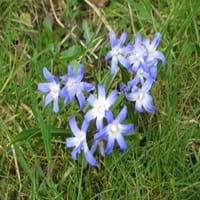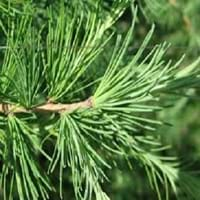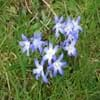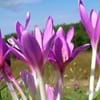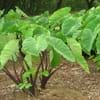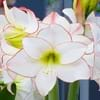Life Span
Perennial
Perennial
Type
Bulb or Corm or Tuber
Needled or Scaled Evergreen
Origin
Mediterranean, Turkey
Eastern Europe, Northern Europe, Russia/Siberia, Central Asia, Nepal, China
Types
Not Available
not available
Habitat
meadows, Terrestrial
Cold Regions
USDA Hardiness Zone
3-9
1-5
Sunset Zone
21,22
A1, A2, A3, 1a, 1b, 2a, 2b
Habit
Clump-Forming
Upright/Erect
Flower Color
White, Blue, Pink, Violet
Green, Red, Yellow
Flower Color Modifier
Bicolor
Bicolor
Fruit Color
Not Available
Brown, Yellow
Leaf Color in Spring
Green
Light Green
Leaf Color in Summer
Light Green
Light Green
Leaf Color in Fall
Several shades of Green
Yellow
Leaf Color in Winter
Light Green
Not Available
Leaf Shape
Long Linear
Needle like
Plant Season
Spring, Winter
Spring, Summer, Fall
Sunlight
Full Sun, Partial Sun
Full Sun, Partial Sun
Type of Soil
Loam
Clay, Loam, Sand
The pH of Soil
Acidic, Neutral, Alkaline
Acidic, Neutral, Alkaline
Soil Drainage
Well drained
Average
Bloom Time
Early Spring, Late Winter
Not Available
Tolerances
Drought
Drought
Where to Plant?
Container, Ground, Pot
Ground
How to Plant?
From bulbs, Seedlings
Seedlings
Plant Maintenance
Medium
Medium
Watering Requirements
Average Water Needs, Do Not over Water, Do not water frequently, Keep the ground moist but not water-logged, Never Over-water
Keep the Soil well drained
In Summer
Lots of watering
Lots of watering
In Spring
Moderate
Moderate
In Winter
Average Water
Average Water
Soil pH
Acidic, Neutral, Alkaline
Acidic, Neutral, Alkaline
Soil Type
Loam
Clay, Loam, Sand
Soil Drainage Capacity
Well drained
Average
Sun Exposure
Full Sun, Partial Sun
Full Sun, Partial Sun
Pruning
Remove damaged leaves, Remove dead branches, Remove dead leaves
Prune to control growth, Remove damaged leaves, Remove dead branches, Remove dead leaves
Fertilizers
All-Purpose Liquid Fertilizer
All-Purpose Liquid Fertilizer
Pests and Diseases
Red blotch
Armillaria root rot, larch sawfly, Needle rust
Plant Tolerance
Drought
Dry Conditions
Flowers
Showy
Insignificant
Flower Petal Number
Single
Single
Foliage Texture
Fine
Fine
Foliage Sheen
Matte
Matte
Attracts
Bees, Flying insects
Rodents
Allergy
Skin rash
Unknown
Aesthetic Uses
Beautification, Bouquets, Ground Cover, Showy Purposes
Landscape Designing, Showy Purposes, Woodland margins
Beauty Benefits
Not Available
Not Available
Environmental Uses
Air purification
Air purification
Medicinal Uses
No Medicinal Use
Unknown
Part of Plant Used
Flowers
Not Available
Other Uses
Decoration Purposes, Showy Purposes, Used as Ornamental plant
Application in Furniture
Used As Indoor Plant
Yes
No
Used As Outdoor Plant
Yes
Yes
Garden Design
Alpine, Container, Foundation, Lawns and Turf, Mixed Border, Rock Garden / Wall, Wildflower
Feature Plant
Botanical Name
CHIONODOXA
LARIX sibirica
Common Name
Chionodoxa, Glory-of-the-Snow
Siberian Larch
In Hindi
Chionodoxa
Siberian Larch
In German
Chionodoxa
Sibirische Lärche
In French
Chionodoxa
Mélèze de Sibérie
In Spanish
Chionodoxa
Larix sibirica
In Greek
Chionodoxa
siberian larch
In Portuguese
Chionodoxa
siberian larch
In Polish
Chionodoxa
Modrzew syberyjski
In Latin
Chionodoxa
Siberian larch
Phylum
Platyhelminthes
Pinophyta
Family
Liliaceae
Pinaceae
Clade
Angiosperms, Monocots
Not Available
Tribe
Not Available
Not Available
Subfamily
Not Available
Not Applicable
Number of Species
Not Available
Difference Between Chionodoxa and Siberian Larch
If you are confused whether Chionodoxa or Siberian Larch are same, here are some features about those plants to help you choose better. Many people think that these two plants have the same characteristics, but one can see Chionodoxa and Siberian Larch Information and learn more about it. Fertilizers required for proper growth of Chionodoxa are All-Purpose Liquid Fertilizer, whereas for Siberian Larch fertilizers required are All-Purpose Liquid Fertilizer. Hence, one should know the basic difference between Chionodoxa and Siberian Larch if you are planning to have them in your garden to enhance its beauty.
<
Flowering PlantsImportance of Chionodoxa and Siberian Larch
Want to have the most appropriate plant for your garden? You might want to know the importance of Chionodoxa and Siberian Larch. Basically, these two plants vary in many aspects. Compare Chionodoxa and Siberian Larch as they differ in many characteristics such as their life, care, benefits, facts, etc. Every gardener must at least have the slightest clue about the plants he wants to plant in his garden. Compare their benefits, which differ in many ways like facts and uses. The medicinal use of Chionodoxa is No Medicinal Use whereas of Siberian Larch is Unknown. Chionodoxa has beauty benefits as follows: Not Available while Siberian Larch has beauty benefits as follows: Not Available.
Compare Facts of Chionodoxa vs Siberian Larch
How to choose the best garden plant for your garden depending upon its facts? Here garden plant comparison will help you to solve this query. Compare the facts of Chionodoxa vs Siberian Larch and know which one to choose. As garden plants have benefits and other uses, allergy is also a major drawback of plants for some people. Allergic reactions of Chionodoxa are Skin rash whereas of Siberian Larch have Unknown respectively. Having a fruit bearing plant in your garden can be a plus point of your garden. Chionodoxa has no showy fruits and Siberian Larch has showy fruits. Also Chionodoxa is not flowering and Siberian Larch is not flowering . You can compare Chionodoxa and Siberian Larch facts and facts of other plants too.
